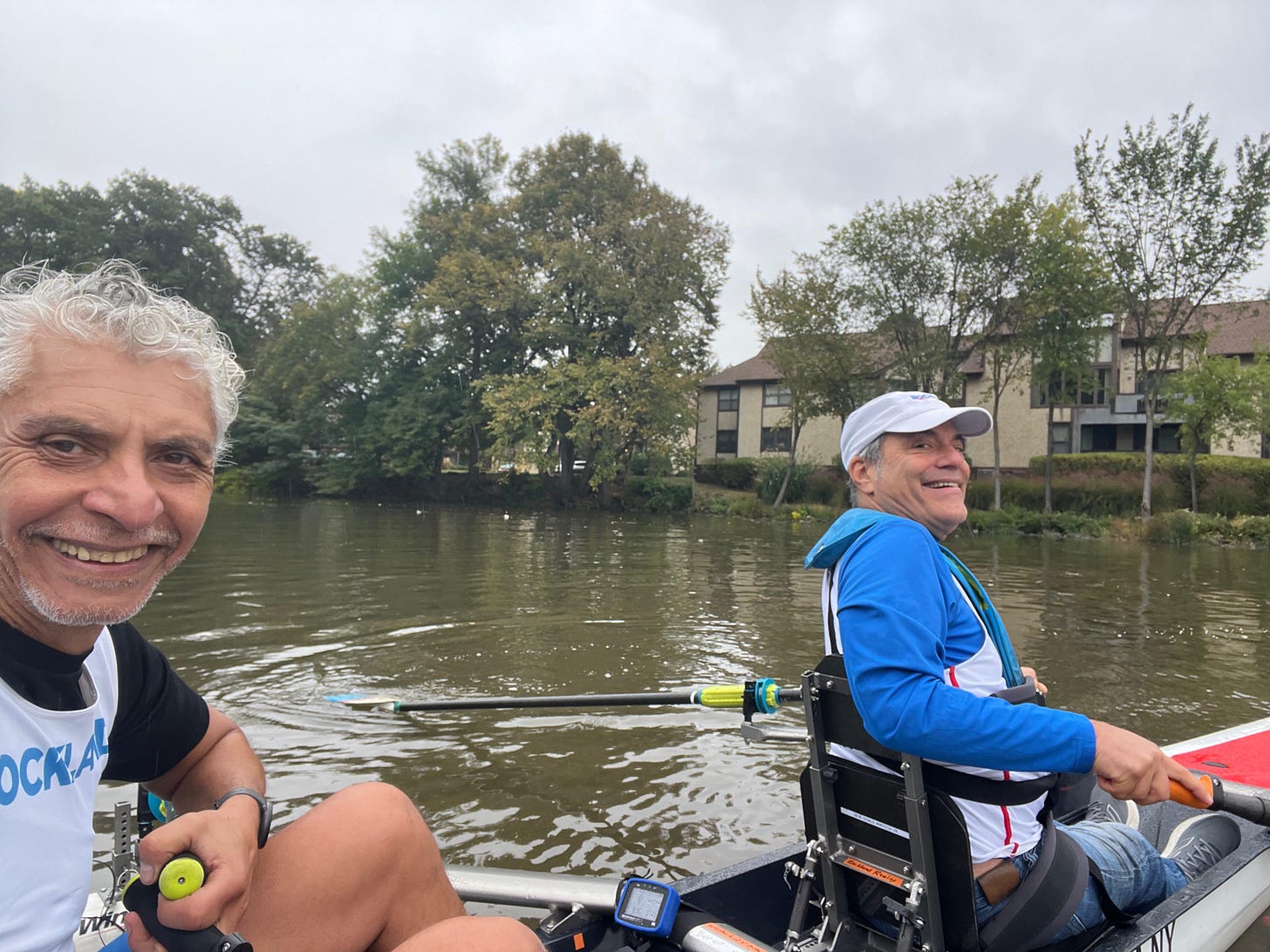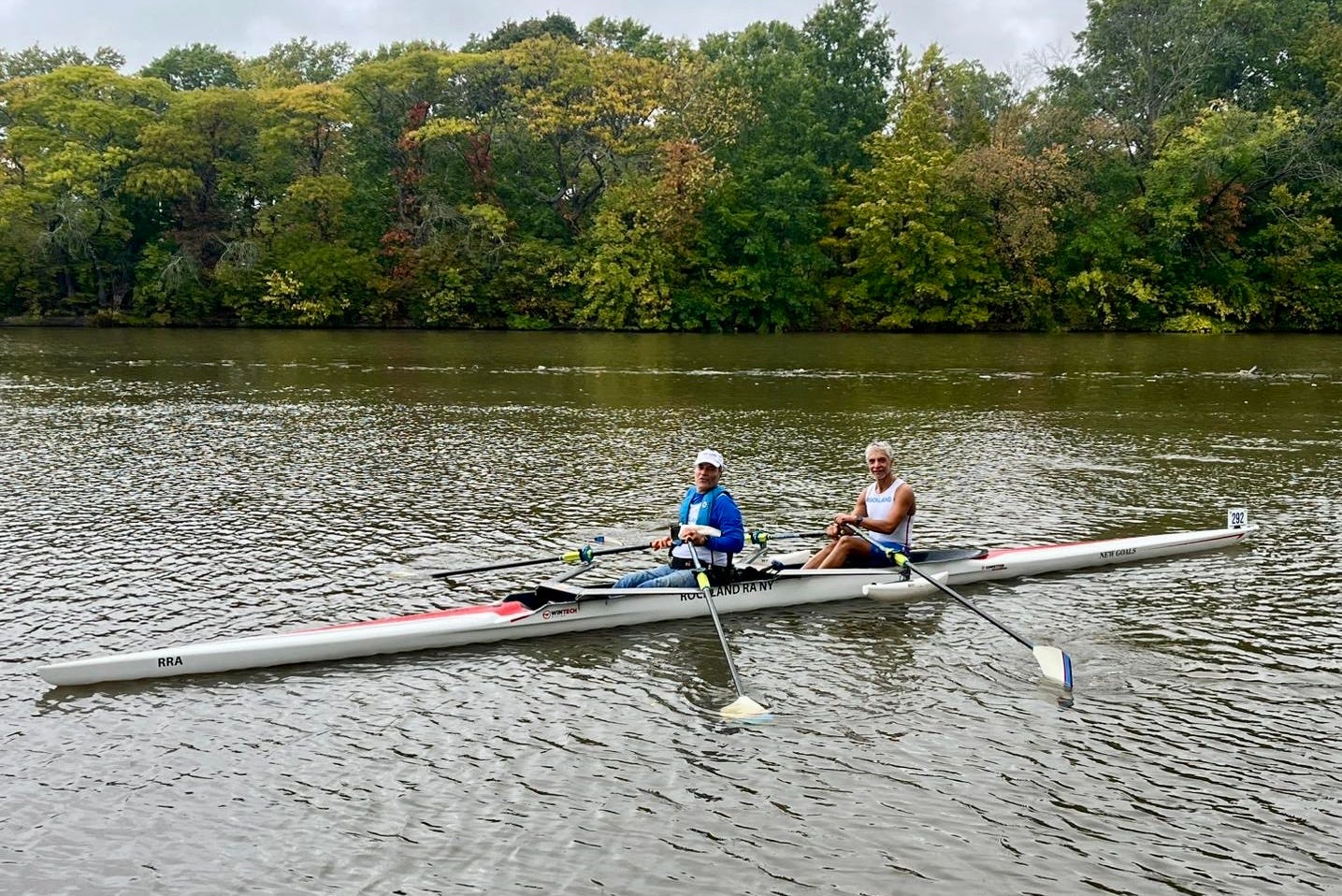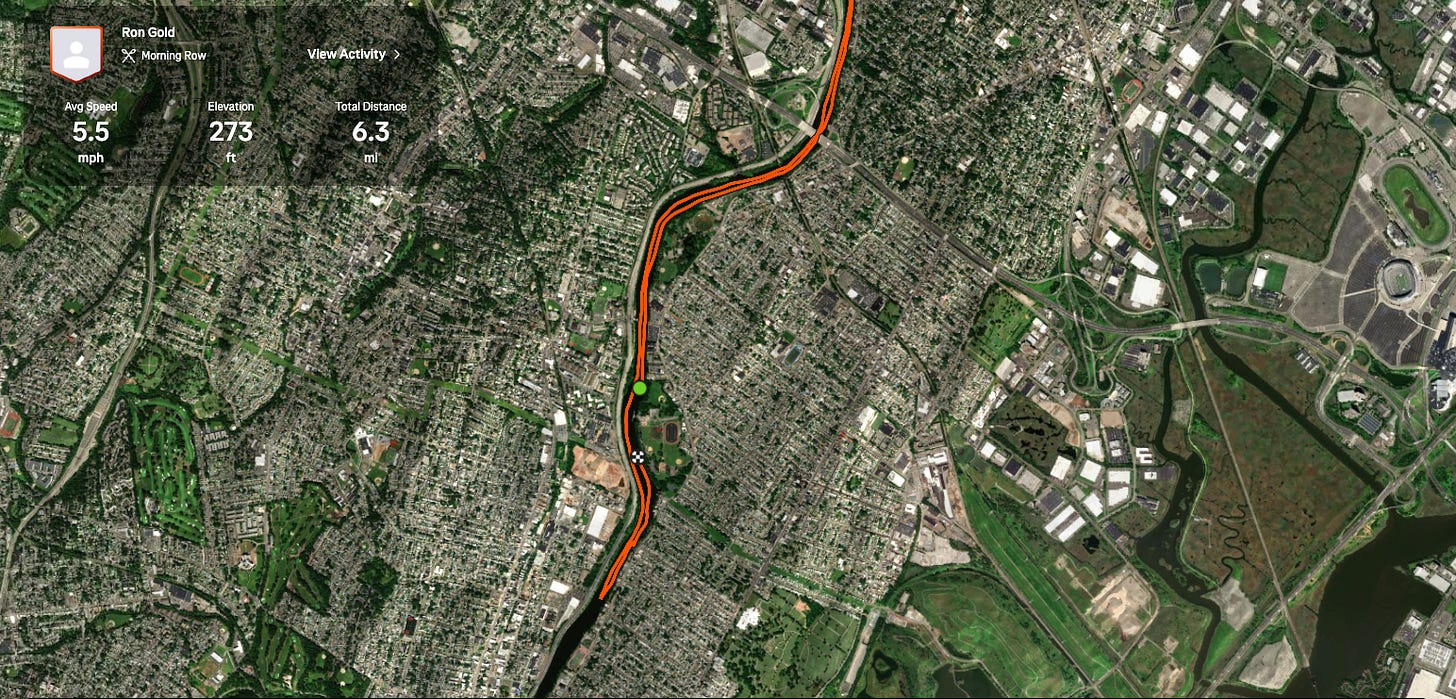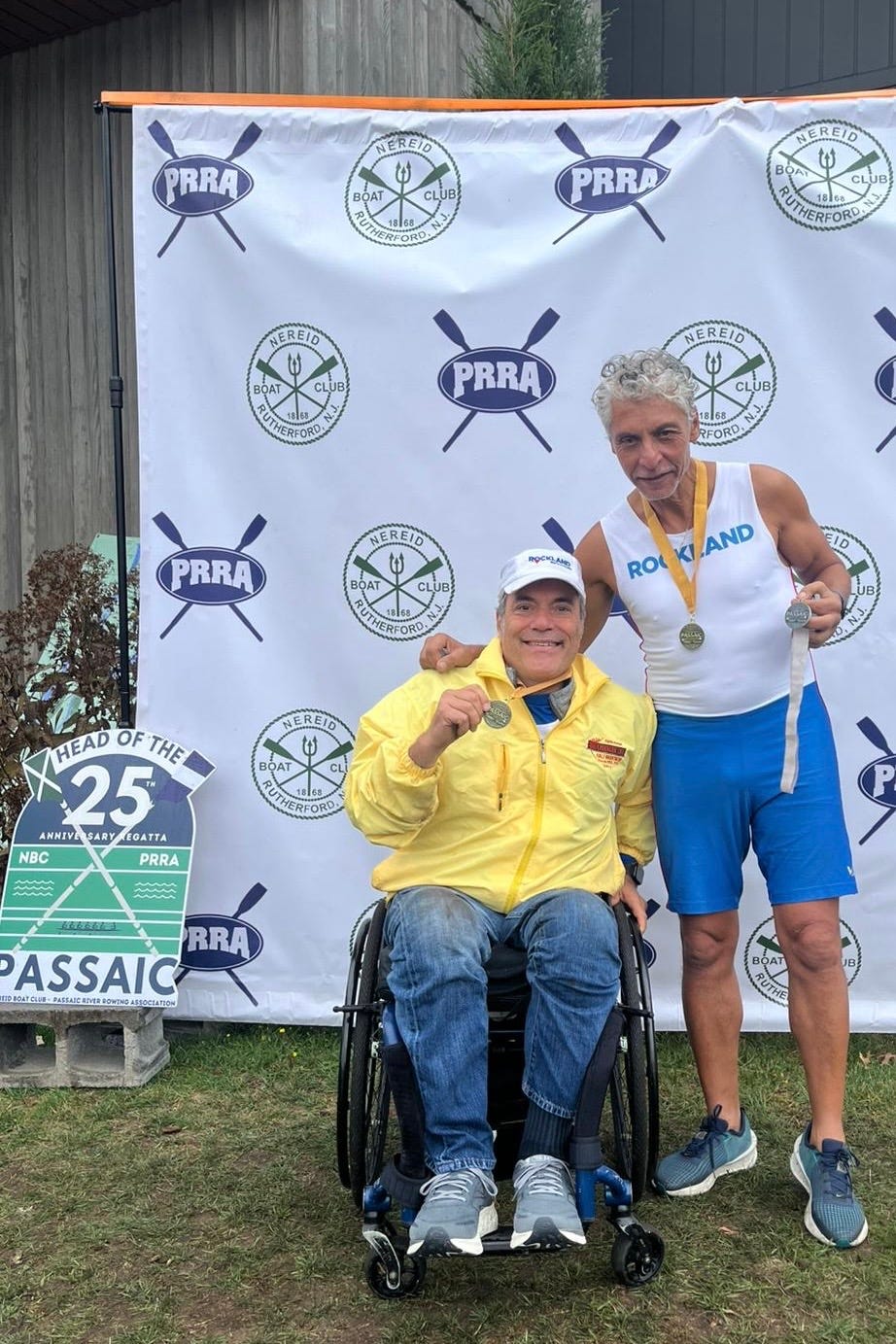It was misting and drizzling all morning along the Head of the Passaic, a light rain that seeps into your clothes and blurs everything around you. The water looked calm at first, but below the surface, it was restless: branches, boards, and the occasional two-by-four drifting past.
This wasn’t the polished spectacle of the Head of the Charles, with spectators lined several deep along the riverbank. The Passaic is scrappy and unpredictable, at times more of an obstacle course with barely a fan in sight. When you hit something, and you will, the test isn’t strength. It’s steadiness. It’s how quickly you find your rhythm after the jolt.
I hadn’t raced in several years. Recently, I’ve been focusing more on handcycling and training for the New York City Marathon. But returning to the boat always feels right. Ironically, there’s something grounding about being on the water, even in the rain.
My Rockland Rowing partner, Marco, is intense in all the best ways: competitive, driven, and completely attuned to the water. He’d already raced that morning and knew the turns, the bridges, the hidden snags. With two more races still ahead, he somehow had enough fire left to push me. Before the start, and even mid-row, he kept saying, “Just keep your rhythm. I’ll stay with you.”
That kind of trust matters. We hadn’t rowed together much, but rowing a double is like a relationship in motion. If one person rushes or drifts, the boat lurches. Strength alone won’t get you far. What matters is the sync—that quiet moment when two separate efforts merge into one.
About halfway through, we hit a patch of debris. My oar caught on something, and for a second, everything wobbled. My first instinct was to fight it, to muscle the oar back under control. But you can’t strong-arm a branch that size. You have to trust a balance that isn’t entirely your own—an equilibrium that wavers before it steadies. The only way to recover is to loosen your grip, breathe, and let the rhythm find you again.
Heading toward the finish.
That isn’t the first time I’ve had to learn that lesson. Life works a lot like that.
We think we can pull harder to steer the current. But the water has its own plan. John Fogerty once wondered, “Who’ll stop the rain,” but the truth is, you can’t. Not the rain, not the driftwood, not the sudden turns beneath the surface. The trick is to find your flow through it: trusting your rhythm, your partner, and your own ability to recover.
That day on the Passaic wasn’t about medals or times. Actually, who am I kidding? That’s always part of it. But it was also about motion. The Passaic isn’t a postcard river. It’s muddy, cluttered, and entirely real. And as a Jersey guy, it felt completely like home. Maybe that’s why it struck a chord and mirrored life itself. You can’t always see what’s ahead, but if you stay in rhythm, trust your partner, and keep pulling, you just might reach flat water again.
[Click here to watch the Flyover on Strava]
I rowed about 11,000 meters that day, the most I’ve ever done in a single session. Marco rowed 45,000, or about 30 miles. But none of that mattered once we found our rhythm. Through drizzle, debris, and the mess of the river, we stayed steady—two rowers moving as one, still strong and in sync all the way to the finish.
Fogerty’s song came out 55 years ago, written in the shadow of Woodstock’s storms. But it was never only about the weather. It was about the noise, the sense that the world, then as now, keeps throwing squalls and chaos our way. Yet somehow, we keep paddling through the turbulence.
I’ve had my share of storms. We all have.
Maybe the goal isn’t to stop the rain.
Maybe resilience isn’t about powering through the storm at all.
Maybe it’s about reading the water, feeling its pull, and keeping your rhythm in the rain.






So cool!
Balance, rhythm, rain - keeping it real. Sounds like another great day! Thanks for sharing!